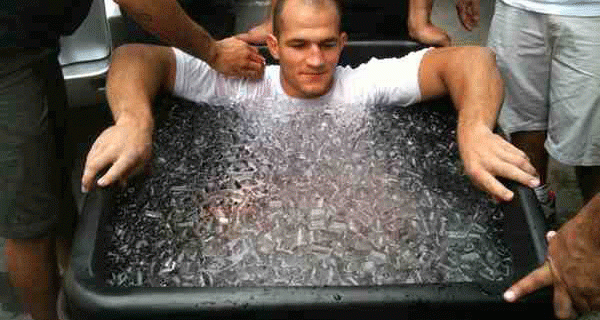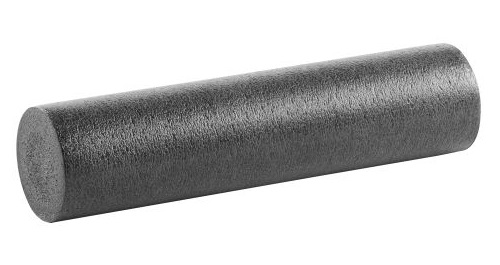Deadlift: WORST MISTAKE That Will Tear Your Bicep Tendons!
Tips To Avoid & Help Recover!
There are plenty of things to worry about when performing a deadlift, but it seems like most of everyone's attention always goes to their lower back. But what you should be focusing on is your biceps. Believe it or not the most common injury when perform a deadlift is a bicep tendon strain or tear and if you don't take the following pre-cautions your biceps could be at risk.
The Mistake!
Now let's talk about the set-up for a conventional deadlift. Your feet are about shoulder width apart and as you reach down and grab the barbell your chest is up and there is no flexion (rounding) in your lower back. Now let’s take a second to look at our arms. If you are using a double overhand grip, then you really have nothing to worry about, but if you are using a switch grip we may have a problem that can be easily corrected.
No matter what grip you are using, you want to make sure your arms are fully extended for two reasons. Number one, you want the barbell to travel the shortest distance possible. Number two, a slight bend in your elbows places the entire load of the barbell on your biceps as if you were about to perform a bicep curl.
This is how I injured myself about a month ago. I pulled a 515lbs deadlift, which was a new record for me, but left my biceps in pain. I was lucky that I didn't tear anything, but even now the strain in my right arm still bothers me, especially down through my brachioradialis.
Perfecting Your Deadlift Form To Avoid A Tear.
What we need to do now is engrave in your brain the proper set-up when deadlifting to avoid this bicep injury. For me, because I never focused on locking my arms out before each lift, it did feel strange at first. With that being said, you may need to lower the weight as you practice your form. A small price to pay to avoid a terrible injury that could keep you out of the gym for months.
You basically want to feel like you are flexing your triceps as you grab the bar. Pretend your arms are solid steel rods and your hands are hooks. This way when you grab the bar there is no chance of a slight bend in your elbows. Also, when using a switch grip, you need to make sure your hand placement on the barbell is EVEN. A common mistake is when someone goes from using a double over-hand grip to a switch grip that they forget to check their hands to make sure they are still an equal distance apart from each other on the barbell. So instead of evenly displacing the weight, one arm takes more of the load and an injury becomes inevitable.
Something else you need to look out for, and this is actually the main reason why I injured myself, is that when you "pull the slack out of the barbell" you don't jerk the bar up and down and then go right into your lift. This makes it very easy for you to "bounce" which will cause you to bend you elbows and if they are bent as you go into the lift the entire load once again will be on your biceps. If you are new to pulling the slack out of the barbell, spend some time practicing this technique before you attempt to pull a personal record. Remember, always keep your arms locked and push through your heels to pull the slack out.
If you are someone who bounces the barbell off the ground, you are at a high risk of injury as well. Think about what happens when you bounce the weight. Not only are you throwing muscle damage out the window, but the bounce will cause you to have a bend in your elbow as you perform the next repetition.
Another thing to keep in mind is that you don't "shrug" the weight up as you deadlift. This is just unnecessary work that can easily cause an injury, mainly because most people can't properly shrug heavy weight without using momentum and whenever momentum is involved and injury is right around the corner.
Lastly, when performing bicep curls make sure you fully extend at the bottom of every repetition. This will help you get used to putting your arms in the same position they would be when deadlifting and help to strengthen your tendons as well.
Tips To Help Recover From Strained Biceps. (Muscle & Tendon)
It goes without saying that if you tear your bicep tendons, you will need to have surgery to fix them and then a few months of rehabilitation. But if you only strain your bicep tendons, here are some techniques to help heal a bit faster. These techniques can also be used if you strained the actual bicep muscle tissue as well. For those of you who can afford to see a massage therapist who is familiar with treating injuries, definitely take the opportunity to have them work on you too.
Icing

If you have a lot of inflammation, icing the area will help reduce it. Hold and massage the area with an ice pack for 15 - 20 minutes, don't keep the ice pack in one spot. Then remove the ice for 30 - 45 minutes, and ice it again. Keep in mind that if you ice an area for too long you can actually cause more damage so that is why it is important to rotate. In extreme cases, frostbite can occur.
Foam Roller

This is a great tool that will help you self-massage the entire area. What you need to do is lay down on the ground and place the foam roller under your shoulder. From here begin to move your body so you roll your bicep and forearm over the foam roller applying as much pressure as you can without being in too much pain. Pain is inevitable, but there is a difference between self-massaging and killing yourself. Foam rolling will help circulate blood to the area bringing much needed oxygen and nutrients to help everything heal.
Thera Cane - Therapeutic Massager

This is a tool that I have been using every night to dig real deep into my upper arm and forearm. I have found that it is best to use a tool like this once your body is warmed-up because the muscles won’t be as tight allowing you to get a bit deeper with the massage. But don’t just massage the area that hurts, you want to start from the shoulder and work all the way down through your bicep and forearm. A trick I learned to help break up the area a bit more is to actually rotate your arm as you drive the tool into the tendons and muscle bellies.
I hope these tips will help you take the proper precautions needed when deadlifting to avoid this type of injury and help those of you who are currently injured heal and get back on track with your gains. But at the end of the day, it is up to you to continue to practice proper form. Spend the next few weeks working with light weight and focus on fully extending your arms and properly pulling the slack out of the barbell.
Only move up in weight when you can get into position without having to think so hard about your form because it is engraved in your brain and is now a part of your natural set-up. #HTH #SHFAthlete #ProjectGains






